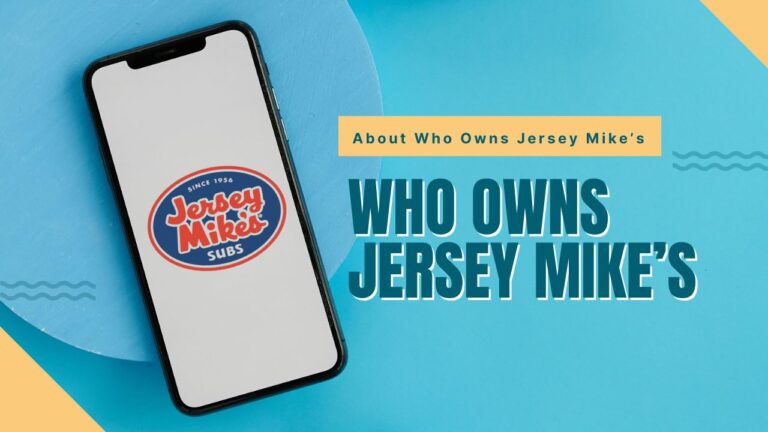Who Owns History Channel? Ownership & Parent Company Explained
Introduction
The History Channel has long been recognized as one of the most prominent sources of historical programming on television.
Since its launch, it has captivated audiences with documentaries, historical series, and educational content, bringing the past to life through engaging storytelling.
Over the years, the channel has evolved beyond traditional history-focused programming, incorporating reality shows, investigative series, and even dramatized historical events.
While some purists argue that its shift towards entertainment has diluted its original purpose, the channel remains a major player in the media landscape.
Its widespread popularity has led to multiple spin-offs, including History2 (H2) and localized versions across different countries, ensuring that its influence continues to grow.
Despite its name, the History Channel is not an independent entity but part of a larger media conglomerate. Understanding its ownership structure provides insight into how the channel operates and the decisions behind its programming shifts.
Media giants such as The Walt Disney Company and Hearst Communications play a significant role in shaping the channel’s direction.
Through its parent company, A&E Networks, History Channel benefits from extensive resources, marketing capabilities, and strategic partnerships.
This article explores the channel’s ownership history, shareholder structure, and the key corporations that control its operations.
Who is History Channel’s Parent Company?
The History Channel is owned and operated by A&E Networks, a major media company with a diverse portfolio of television networks and digital properties.
A&E Networks is a joint venture between The Walt Disney Company and Hearst Communications, two of the most influential media conglomerates in the world.
While A&E Networks itself is not a publicly traded company, its parent companies exert significant influence over its operations, branding, and content strategy.
Through this ownership structure, the History Channel benefits from both Disney’s vast media empire and Hearst’s deep-rooted publishing and broadcasting experience.
The partnership allows A&E Networks to maintain a strong presence in the competitive television industry while adapting to changing audience preferences and technological advancements.
A&E Networks manages several well-known television channels, including A&E, Lifetime, and History Channel, among others.
With its diverse range of programming, A&E Networks has established itself as a leader in factual entertainment, producing content that appeals to a broad audience.
The History Channel, in particular, has been one of its most successful brands, expanding beyond television into digital streaming services and merchandise.
The strong backing from Disney and Hearst ensures the channel has the financial and strategic resources necessary to remain competitive in the ever-evolving media landscape.
Overview of A&E Networks
A&E Networks was originally founded as a partnership between Hearst Communications, the National Broadcasting Company (NBC), and the American Broadcasting Company (ABC) in 1984.
Over time, the company underwent significant changes, with Disney acquiring ABC and eventually absorbing NBC’s share.
Today, A&E Networks is a 50-50 joint venture between Disney and Hearst, giving both companies equal ownership and influence over its operations.
The network’s focus has expanded beyond traditional cable television, with investments in digital streaming platforms, original content production, and international distribution.
Key Executives and Leadership
A&E Networks is overseen by a team of high-level executives who shape the company’s strategic direction and content development.
The leadership team includes a CEO, programming executives, and business strategists responsible for overseeing the network’s various brands, including the History Channel.
These executives make key decisions on acquisitions, original programming, and partnerships, ensuring that the company remains competitive in the rapidly changing media landscape.
With the backing of Disney and Hearst, A&E Networks can attract top industry talent and invest in high-quality content.
Relationship with Disney and Hearst
The Walt Disney Company and Hearst Communications share equal control over A&E Networks, making them the ultimate owners of the History Channel.
Disney’s influence brings extensive distribution capabilities and access to a vast entertainment empire, while Hearst contributes expertise in journalism, publishing, and broadcast media.
Together, they ensure that A&E Networks remains financially stable and strategically positioned for future growth.
Their joint ownership model allows A&E Networks to leverage the strengths of both corporations while maintaining its own brand identity.
History Channel’s Ownership History
The Founding of History Channel
The History Channel was launched on January 1, 1995, as part of A&E Networks’ expansion into educational and documentary programming.
The channel was initially conceived as a space for high-quality historical documentaries, covering topics ranging from ancient civilizations to modern wars.
It quickly found a dedicated audience, attracting history enthusiasts, educators, and students who appreciated its in-depth storytelling and expert analysis.
During its early years, the channel focused on broadcasting traditional history-based content, often featuring archival footage, interviews with historians, and dramatic recreations of historical events.
As the channel gained traction, A&E Networks continued to invest in its development, expanding its programming lineup and increasing its distribution reach.
The success of the channel led to the creation of spin-off networks, including History International and Military History.
Over time, the History Channel diversified its content, incorporating reality-based series and entertainment-driven historical shows.
While some critics argue that this shift diluted the channel’s original educational purpose, it also broadened its appeal, attracting a larger and more diverse audience.
Early Ownership and Growth
At its inception, the History Channel was owned entirely by A&E Networks, which was itself controlled by a partnership between Hearst Communications and Disney.
This ownership structure allowed the channel to benefit from the financial resources and media expertise of both companies.
As the channel grew in popularity, A&E Networks made strategic investments to expand its reach, securing distribution deals with major cable providers and launching digital streaming initiatives.
The channel’s early success set the foundation for its long-term growth, establishing it as a major player in the history-focused entertainment sector.
Expansion into Global Markets
Recognizing the potential for international growth, A&E Networks expanded the History Channel into global markets, launching localized versions across Europe, Asia, and Latin America.
These regional adaptations included language-specific content, regionally relevant documentaries, and collaborations with local media partners.
The global expansion strategy helped cement the History Channel as a leading provider of historical programming worldwide.
Digital and Streaming Evolution
In response to the rise of digital media, the History Channel embraced streaming platforms, launching dedicated apps, on-demand services, and original digital content.
These efforts ensured that the channel remained relevant in an era where traditional cable television viewership was declining.
Today, the History Channel’s content is available on multiple digital platforms, allowing audiences to access historical documentaries and series on demand.
History Channel’s Shareholder Structure
Ownership Breakdown of A&E Networks
A&E Networks is a 50-50 joint venture between The Walt Disney Company and Hearst Communications, meaning both companies have equal ownership and influence over the network’s strategic direction.
This ownership structure ensures that both Disney and Hearst share decision-making authority, financial responsibilities, and long-term planning for A&E Networks and its associated brands, including the History Channel.
The equal partnership allows A&E Networks to leverage the vast media resources, technological advancements, and global distribution networks of Disney while also benefiting from Hearst’s extensive experience in publishing, broadcasting, and factual storytelling.
This balance provides stability and allows A&E Networks to navigate the ever-changing media landscape while maintaining its unique brand identity.
The joint ownership model has enabled A&E Networks to expand its content across multiple platforms, including traditional cable television, digital streaming services, and international markets.
With Disney’s expertise in entertainment and Hearst’s background in journalism and media production, A&E Networks continues to thrive as a major player in the television industry, ensuring the long-term success of the History Channel and its related properties.
Influence of Disney on A&E Networks
Disney’s 50% ownership stake in A&E Networks grants the media conglomerate significant influence over the company’s strategic direction, content development, and overall market positioning.
As one of the most powerful entertainment companies in the world, Disney brings unparalleled media resources, cutting-edge technology, and extensive global distribution networks to A&E Networks.
This partnership allows A&E to tap into Disney’s deep expertise in audience engagement, advertising strategies, and digital expansion, helping it remain relevant in an increasingly fragmented media landscape.
Disney’s influence also extends to cross-promotional opportunities, where A&E Networks can benefit from strategic marketing collaborations with Disney’s other properties, including ABC, ESPN, and Hulu.
Additionally, Disney’s vast industry connections and innovative approach to content distribution enable A&E Networks to expand its reach across multiple platforms, from traditional cable television to streaming services and on-demand viewing.
As consumer viewing habits shift toward digital consumption, Disney’s technological capabilities and strategic investments in streaming platforms like Disney+ and Hulu help A&E Networks adapt and stay competitive.
By leveraging Disney’s resources, A&E Networks ensures that channels like the History Channel continue to grow their audience base, maintain strong advertising revenue, and produce high-quality content that appeals to both traditional and modern viewers.
Role of Hearst Communications
Hearst Communications plays a vital role in A&E Networks by leveraging its deep publishing expertise. With a strong background in journalism and media production, Hearst ensures that factual storytelling remains a core element of A&E’s content.
The company’s vast experience in print and digital media helps maintain high editorial standards. Its influence supports the educational mission of the History Channel, emphasizing accuracy and compelling narratives.
By contributing industry knowledge, Hearst enhances documentary-style programming and historical content. Its long-standing reputation in media ensures credibility and audience trust. This partnership strengthens A&E Networks’ position in factual entertainment.
Strategic Partnerships and Joint Ventures
A&E Networks forms strategic partnerships with various media companies to expand its content distribution. By licensing History Channel programs to streaming services, international broadcasters, and digital platforms, the network reaches a wider audience.
These collaborations ensure that historical and documentary content remains accessible across multiple viewing formats. Joint ventures with media giants enhance the network’s ability to create high-quality programming.
Such partnerships also strengthen A&E Networks’ financial position through diversified revenue streams. Expanding into global markets allows the History Channel to grow its influence and audience base. These strategic alliances reinforce the network’s commitment to factual storytelling.
Conclusion
The History Channel continues to be a dominant player in historical programming, benefiting from Disney and Hearst’s financial and strategic backing. Its ability to blend educational content with engaging storytelling has kept it relevant to modern audiences.
Over the years, the network has expanded beyond traditional documentaries to include reality shows, docuseries, and digital content. This evolution reflects its adaptability in an ever-changing media landscape.
Strong partnerships and global distribution efforts further cement its position as a trusted source of historical and factual content. By embracing new formats, the History Channel maintains its appeal across generations. Its commitment to quality storytelling ensures its continued success.



